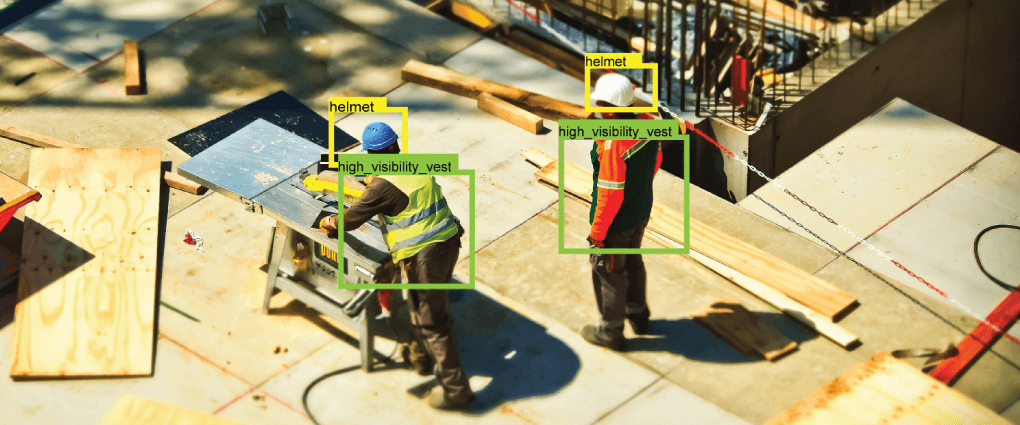Technology is at the heart of today’s health and safety management systems. The advent of new technologies helps to make construction worksites safer. ‘Always on’, they aim to eliminate human factors in day-to-day operations and reduce risks for worker injury.
PPE monitoring is one of the areas where technology is ready to disrupt the modus operandi of construction businesses and introduce a new generation of tools for health and safety protection.
Smart PPE Wearable Technology
Smart PPE introduces sensors, beacons, and other communication modules into hardhats, protective goggles, earmuffs, and other protective equipment worn by construction workers.
It turns the equipment into smart wearables, reporting on dangerous sound levels, informing health and safety officer about dangerous situations in real-time, and creating the backbone of the construction health and safety management system.
A ‘FitBit’ for industrial applications, smart PPE devices rely on Bluetooth, WiFi, or LTE for real-time data transmission.
However, the high per-user costs limit the technologies deployment.
Firstly, smart PPE requires a constant connection to the central health and safety management system for data reporting.
Be it Bluetooth or WiFi, it needs a reliable connection across the worksite premises. The LTE connection is also not always available, as work can be performed underground (e.g. in mining operations).
When deploying smart PPE, the company has to ensure an additional reliable data network. Paired with high costs per device, it limits the spread of smart PPE in day-to-day operations.
In addition, smart PPE still needs supporting video data for incident analysis. Even with real-time alerts on safety protocol breaches (e.g. protective hardhat was not worn), the solution still lacks supportive ‘hard proof’ data to ensure that there indeed was a PPE breach and not a malfunction of equipment sensors.
Smart PPE can prevent injuries and save lives, it is a groundbreaking use of advanced technologies. However, high deployment costs per user limit its widespread adoption.
Additionally, it needs other supporting technologies (e.g. smart video monitoring) to form the backbone of a next-generation health and safety management system.

Ensuring PPE compliance with Computer Vision
Computer Vision solutions constantly monitor the worksite by analyzing video data from security surveillance cameras already installed on the construction site.
It uses AI and smart algorithms to detect safety protocol breaches, measure worker productivity, restrict unauthorized access to the construction site, track material quantities and their layout across the workplace.
Computer Vision solutions need little to no capital investment for deployment – the solution relies on security video footage. It does not require any additional hardware per worker keeping the costs down.
Most importantly, Computer Vision algorithms can be utilized for a variety of tasks – not only PPE monitoring.
It only takes additional algorithms and training to support a wide variety of intelligent measurement features using the same datapoint – video security footage.
As with smart PPE devices, Computer Vision solutions can monitor if PPE is worn at all times. If the platform detects a policy breach, it can notify the site security officer in real-time. In addition, the supporting evidence of the PPE protocol breach is stored in the database with accompanying video footage for later incident analysis.
The software can be easily updated with the improvement of recognition models. Additional and customized measurement models can also be updated with little effort. Furthermore, the platform does not require Bluetooth, WiFi, or a mobile data network to be activated on the construction site. The standard set of PPE equipment currently in use can be fully utilized with Computer Vision health and safety management system.
Although no system is perfect, Computer Vision platforms present more versatility, lower deployment costs, and simpler day-to-day operations of health and safety management systems.
Ready to improve business processes? Get in touch!
Not Sure How AI Can Help Your Business? Let’s Talk!

Ugnė Daniūnaitė
Business Development Manager
Book a no-obligation free consultation with our expert.


